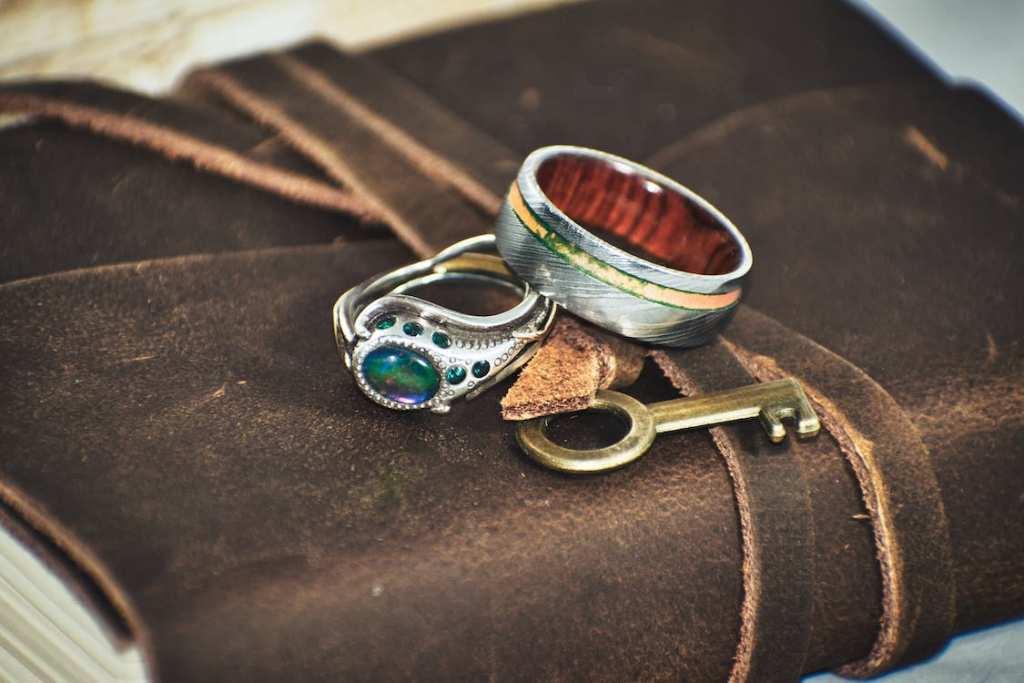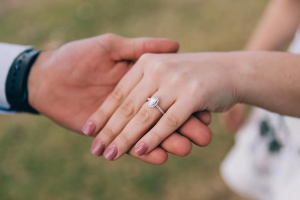A mood ring is a wearable jewelry piece that gives you a visual representation of your current state of mind. The rings come in many shapes and sizes and are usually made from plastic or glass. You can wear the rings on the finger part of a jewelry set.
The ring will change color depending on your mood, and the color will match your mood perfectly. This color change occurs because the rings have a tiny chip that reacts to light—the more light it sees, the brighter it gets, which means it turns brighter when you’re feeling positive and fades when you’re feeling negative.
Mood Ring Color Meaning
| Color | Meaning |
| Black | Tired, stressed, overworked |
| White | Confused, bored, unfocused |
| Gray | Anxious, nervous, moody |
| Pink | Happy, romantic, affectionate |
| Blue | Calm, relaxed, peaceful |
| Yellow | Excited, adventurous, creative |
| Red | Energized, passionate, motivated |
| Orange | Enthusiastic, confident, outgoing |
| Green | Balanced, stable, harmonious |
| Purple | Imaginative, creative, spiritual |
| Dark Blue | Intuitive, introspective, mysterious |
| Golden | Inspired, enlightened, confident |
| Brown | Restless, uneasy, conflicted |
| Blue Green | Expressive, communicative, empathetic |
How do mood rings work?
The exact colors that are produced by a mood ring can depend on a number of factors, including the type of liquid crystal used in the ring, the temperature range that the ring is designed to respond to, and the ambient temperature of the environment in which the ring is being worn.
The mood ring that we often talk about refers to a ring that contains a liquid crystal substance and is very sensitive to the wearer’s body temperature. When the temperature of the wearer’s skin changes, the liquid crystal in the mood ring responds by twisting or changing its molecular structure, which causes a change in the way it reflects light and appears to the human eye. This change in appearance creates different colors that are associated with different moods.

Why can’t we see accurate colors on a mood ring?
Mood rings are not typically designed or calibrated to produce highly accurate or consistent colors. The range of colors that a mood ring can produce is often limited, and the colors may shift or change in response to changes in the ambient temperature or other environmental factors. As a result, the colors of a mood ring should be taken as a general indication of the wearer’s emotional state, rather than a precise or reliable measurement.
How Long Do They Last?
Mood rings are designed to mirror your mood, dependent on the temperature of your finger.
A high-quality mood ring should endure for a few years, but it can survive for decades with proper care. However, You can still purchase only a few functioning mood rings from the 1970s in vintage stores.
Keep in mind that mood rings are sensitive to dampness and water. Water seeping through the primary crystal of a mood ring usually results in the untimely demise of the ring. The crystal changes to black and stops responding when it comes into contact with water. After then, it stops reacting to temperature fluctuations or changing its color.
Similarly, mood rings can be harmed by extremely high temperatures. Your mood ring’s stones could become permanently damaged if you leave it in a warm environment, such as a car’s dashboard, or if you keep it out in the sun for an extended period.
Therefore, you must utilize a mood ring carefully if you want it to last a long time. Wearing it in the rain or taking it to the restroom should be avoided. You can increase your lifespan by keeping your mood ring out of the heat and dampness and at room temperature.
Takeaway
Yay, we are all set with mood ring colors and meanings. We highly hope that you have found our article helpful and explained everything that needs to be learned about mood rings. Nonetheless, if you are searching for rings of any type, you no longer have to head out to the market. At Callie, we have all kinds of rings available within a few clicks. You will get unique designs and multiple sizes, and customization options.

